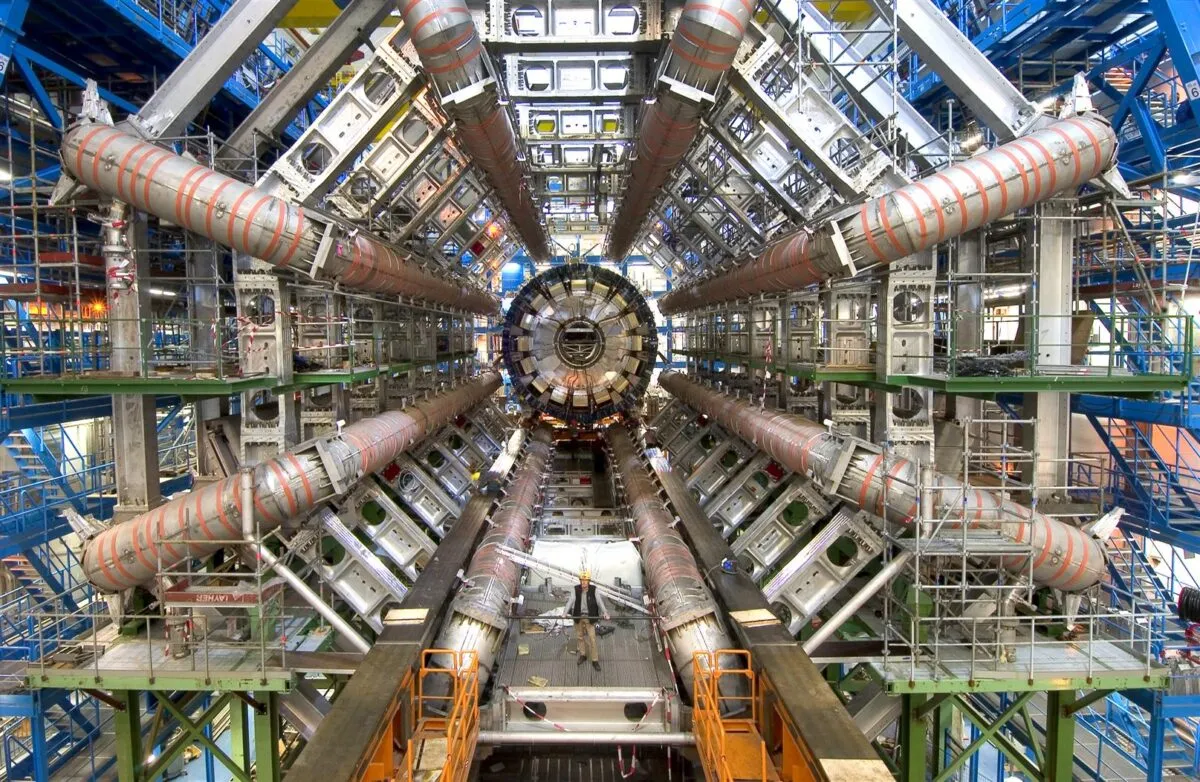Physicists don’t just gather data from the stars. Particle accelerators also feature big in modern experimentation.
Particle accelerators often have a toroidal shape, looping particles round and round, boosting their energy as they go.
The earliest example of such an accelerator was developed in 1930 by Ernest Lawrence and measured only 5 inches (12.7cm) across. The largest to date has a diameter of more than 5 miles (8km)!
By attaching detectors at various points, particle physicists are able to observe physical events at extraordinary energies.
Some experiments have stood out in recent history.
The ATLAS experiment at the Large Hadron Collider in Switzerland involves the largest particle detector ever made.
It is a cylinder 46m long and 25m in diameter, with 100 million sensors.
For more, read our interview with theoretical physicist John Ellis or listen to our podcast interview with physicist Harry Cliff.

In 2012, ATLAS was key to confirming the existence of the Higgs field, which is thought to help confer particles with some of their mass.
It did this by detecting the particle associated with this field: the Higgs boson. This discovery added more confirmation to the Standard Model (a physicists’ default theory of fundamental physics).
But another series of experiments did the opposite.
In 2001, physicists at the Brookhaven National Laboratory’s accelerator siphoned off a beam of muons (a bit like massive electrons) into a magnetic ring in the hope of establishing a so-called‘g’ value.
Their results, which were corroborated at Fermilab’s accelerator in 2019, indicated that the ‘g’ value was not what the Standard Model predicted.
But because the results are not as statistically significant as they would like, physicists are holding off from saying if they are indicative of a new theory.
This guide originally appeared in the May 2022 issue of BBC Sky at Night Magazine.
